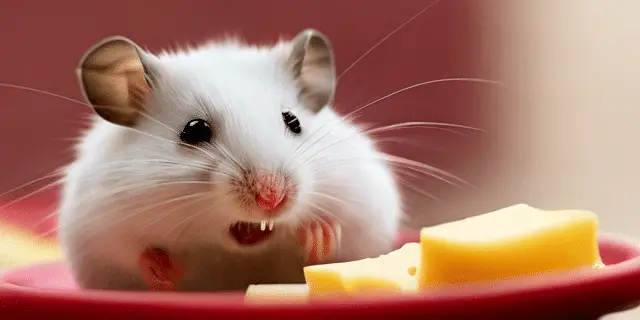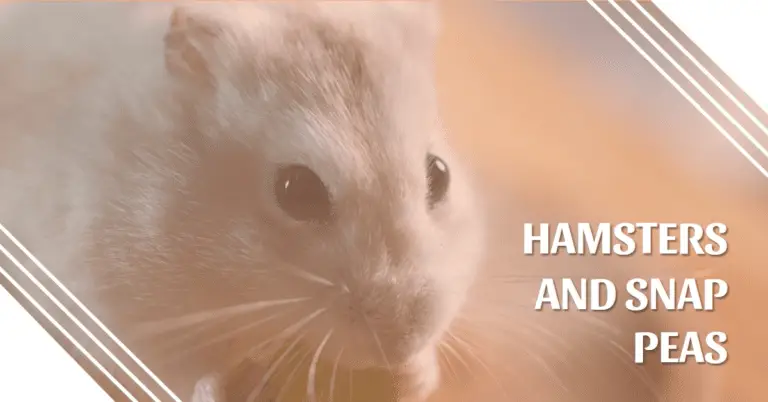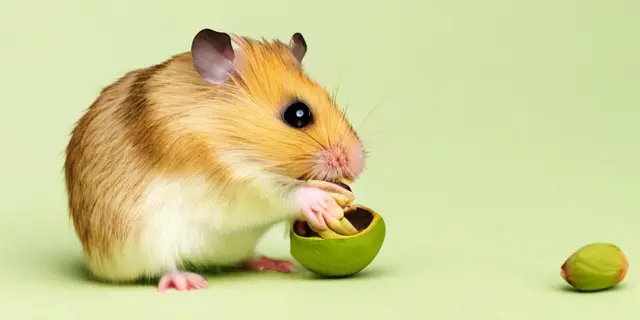Spinach is a leafy green vegetable that is touted for its high nutrient content. It contains vitamins A, C, K, iron, calcium, and folate. Spinach is also high in antioxidants which can help boost immunity. With all these health benefits, can hamsters eat spinach too?
Can Hamsters Eat Spinach?
Yes, hamsters can eat spinach in moderation. Spinach contains nutrients like vitamin C, vitamin K, magnesium, calcium, iron, and folate that can benefit hamsters. The antioxidants in spinach may also give your hamster’s immune system a boost.
However, there are some things to keep in mind when feeding spinach to hamsters:
- Spinach contains oxalic acid which can bind to calcium and prevent absorption. Feed spinach in moderation, no more than 1-2 times per week.
- Spinach also contains nitrates which can be harmful in large amounts. Feed no more than 1-2 small leaves per serving.
- Introduce spinach slowly and watch for any digestive upset.
- Always wash spinach thoroughly to remove any pesticides or contaminants.
- Avoid feeding canned or frozen spinach, as the salt and preservatives can be unhealthy. Use only fresh spinach.
- Do not rely on spinach as the main component of your hamster’s diet. Spinach should be an occasional treat.
So in summary, yes hamsters can eat spinach safely in small quantities. Offer it sparingly as part of a balanced diet.
Nutritional Benefits of Spinach for Hamsters
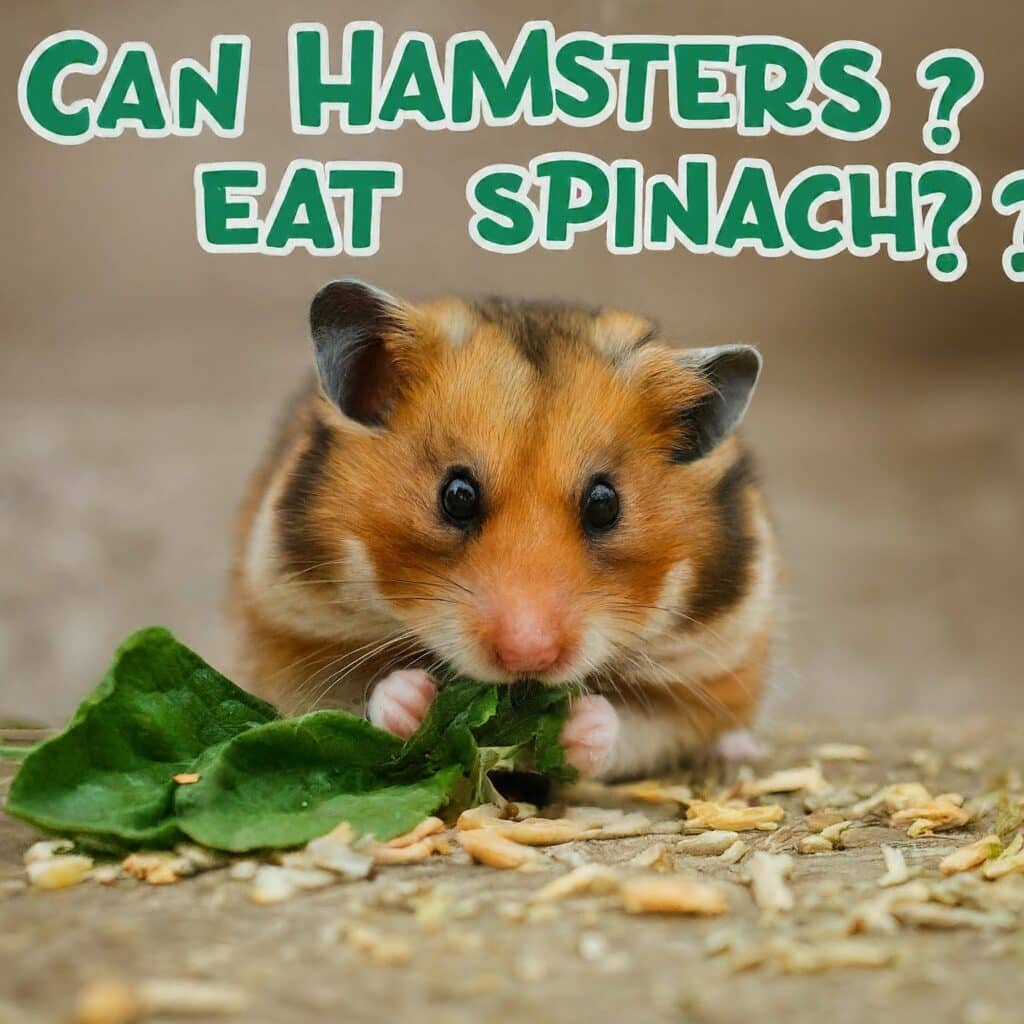
Here are some of the top nutrients found in spinach that can benefit your hamster:
Vitamin C
Spinach is high in vitamin C, with a 1 cup serving providing over 20% of a hamster’s recommended daily intake. Vitamin C is an essential antioxidant that boosts immunity and helps wounds heal faster. It also keeps tissues healthy.
Vitamin K
Spinach contains high levels of vitamin K which is important for blood clotting. It helps stop cuts and scrapes from bleeding excessively. Hamsters are prone to injury from falls or bites so vitamin K helps minimize bleeding risks.
Calcium
There is some calcium in spinach which is needed for building strong bones and teeth. However, the calcium bioavailability is reduced due to oxalates. So spinach should not be relied on as the main dietary calcium source.
Iron
Spinach provides iron which helps carry oxygen through the blood. Iron aids in energy production and keeps hamsters lively and active.
Magnesium
Magnesium in spinach helps regulate blood pressure, blood sugar and supports immune health. It also aids muscle and nerve function.
Folate
Folate is essential for new cell production and growth. It helps produce new blood cells and keeps tissues healthy. Pregnant or growing hamsters especially need folate.
So while spinach should not be a daily vegetable, the nutrients it provides in moderation can give your hamster some health benefits.
Possible Concerns with Feeding Spinach to Hamsters

While spinach does provide valuable vitamins and minerals, there are some possible concerns with feeding it to hamsters:
Oxalic Acid
Spinach contains oxalic acid which can bind to calcium in the diet and prevent proper absorption. Over time, poor calcium absorption can lead to bone and teeth issues.
Nitrates
Spinach contains nitrates, especially when grown in high-nitrogen soils or harvested from polluted areas. High nitrate intake is linked with poor health and even cancer.
Pesticides
As a leafy plant, spinach is prone to pesticide exposure. These can be very harmful to small animals like hamsters. Always wash spinach thoroughly before feeding.
Diarrhea
The high fiber and water content in spinach may cause loose stools or diarrhea if fed in large amounts. Introduce slowly and discontinue if diarrhea occurs.
Reduced protein absorption
The oxalic acid in spinach may also bind to proteins and reduce protein absorption. So spinach should not replace high protein foods like insects.
To avoid these concerns, feed spinach in moderation 1-2 times per week. Wash thoroughly, introduce slowly, and discontinue if any digestive upset.
How to Feed Spinach to Your Hamster
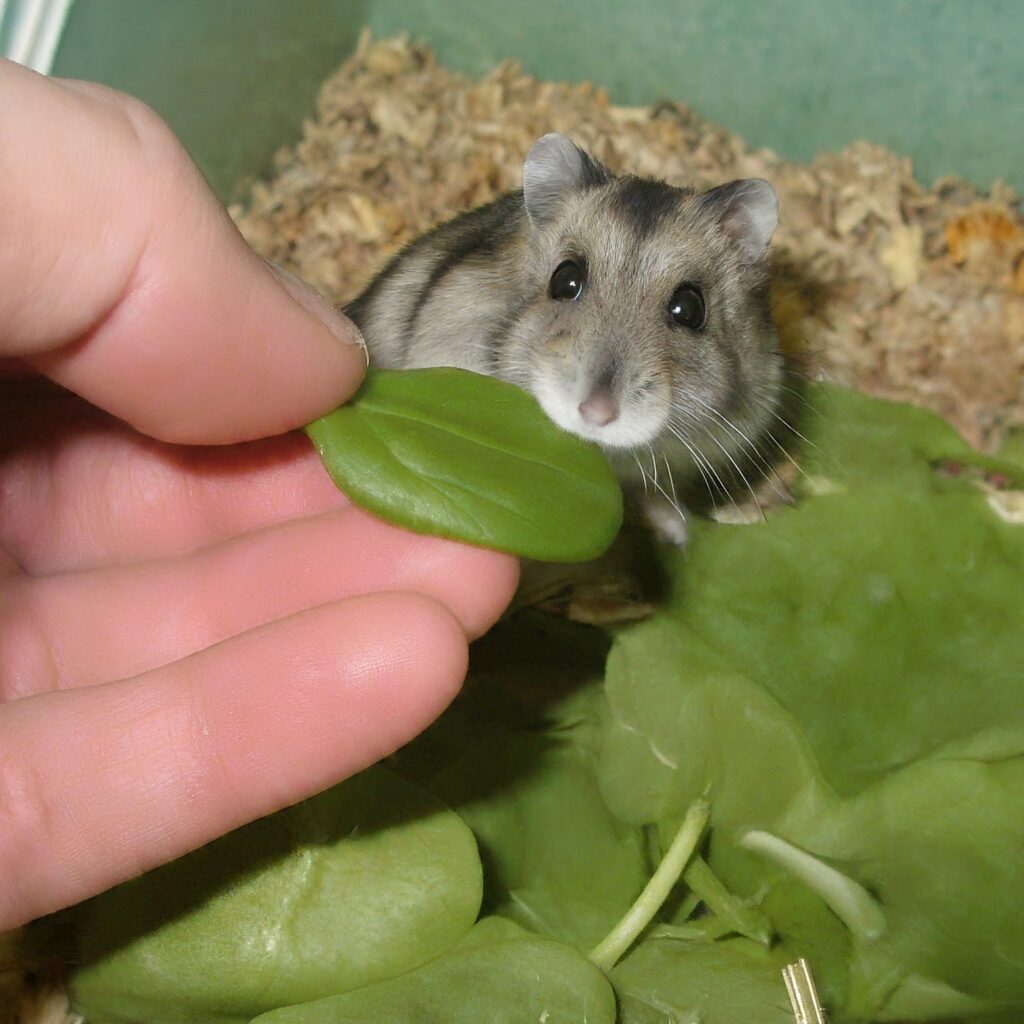
When offering spinach to your hamster, follow these tips for safe feeding:
- Select fresh, crisp spinach leaves. Avoid wilted, slimy, or browning leaves.
- Wash the leaves thoroughly under cool running water to remove dirt, debris, and any pesticide residues.
- Pat the spinach leaves dry with a paper towel or salad spinner. Make sure no water remains on the leaves.
- Chop the spinach into small pieces to make it easier for your hamster to chew and digest.
- Offer spinach in limited quantities – 1-2 small leaves or about 1 tsp chopped per feeding. Too much at once can cause diarrhea.
- Place the spinach pieces into your hamster’s feeding dish, mixing it in with their regular food.
- Remove any uneaten spinach within 24 hours to prevent spoilage.
- Introduce spinach slowly. Start with just a bite or two for a few days, monitoring your hamster’s droppings.
- Increase portion size gradually as long as your hamster tolerates it well.
- Only feed spinach 1-2 times per week at most, as part of a varied diet.
By introducing spinach gradually and sticking to the recommended serving size, you can safely provide your hamster with the nutrients in spinach without overdoing it.
Best Spinach Alternatives for Hamsters
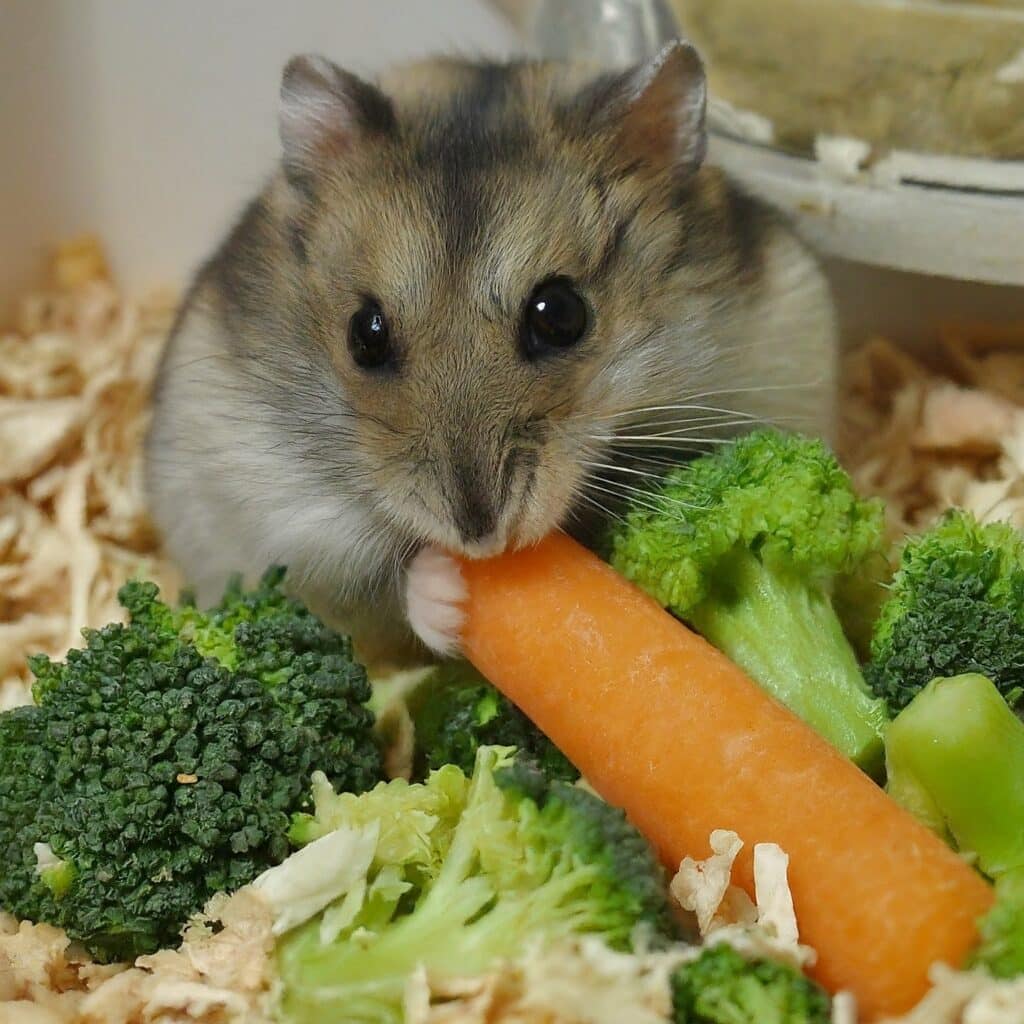
While spinach can be fed to hamsters in moderation, you may be looking for safer alternatives that can be given more frequently or in larger portions. Here are some of the best spinach alternatives for hamsters:
Kale
Kale is lower in oxalates than spinach, so it does not impair calcium absorption as much. It provides similar nutrients like vitamins A, C, K without the excess nitrates.
Carrot Greens
The leafy greens attached to the top of carrots are perfect for hamsters. Carrot greens provide vitamin K without oxalates or nitrates.
Romaine Lettuce
Romaine is a low-oxalate lettuce that offers vitamin A, B vitamins, and vitamin K. The small leaves are sized right for hamsters.
Endive
Endive is another low-oxalate green that can be fed more liberally than spinach. It also has fiber, folate, vitamins C, E, and K.
Bell Peppers
For vitamin C without oxalates, try red, yellow, or green bell peppers. Remove seeds first. The crunchy texture also helps wear teeth.
Broccoli
In small amounts, broccoli florets provide vitamin C and K without excess oxalates. But introduce slowly as the gas-causing raffinose can cause bloating.
Carrots
Carrots make the perfect daily veggie for hamsters to munch on. They provide vitamin A, C, K and Beta carotene – all beneficial with minimal risks.
So when your hamster needs their daily dose of vegetables, choose safer options like carrots, romaine, or endive. Use spinach sparingly as a supplemental source of minerals and antioxidants.
Hamster Diet Guidelines
To keep your hamster healthy, follow these general diet guidelines:
- Offer a high quality commercial hamster food as the dietary staple. Choose an appropriate formula for your hamster’s age.
- Supplement with a small treat portion of vegetables, fruits, seeds, nuts or insects 1-2 times per day.
- Introduce new foods slowly and in small amounts to check for tolerance.
- Feed a variety of supplements for balanced nutrition. Rotate through different fruits, vegetables, proteins and grains.
- Avoid excess sugary fruits or starchy vegetables.
- Provide a constant supply of clean, fresh drinking water.
- Do not overfeed – follow package portions to avoid obesity.
- Remove perishable leftovers within 24 hours.
- Provide a cuttlebone or mineral chew to help wear teeth and provide calcium.
- Avoid human junk food, chocolate, caffeine, alcohol and other dangerous foods.
Following these simple but important guidelines will keep your hamster healthy and ensure spinach and other veggies are fed safely. Check with your veterinarian for any other diet advice specific to your hamster.
Signs Your Hamster Can or Cannot Eat Spinach
When first introducing spinach, watch your hamster closely for these signs:
Signs Spinach is Tolerated:
- Eats the spinach readily without hesitation
- Does not show signs of diarrhea after 24 hours
- Continues to be active and playful as normal
- Stool and urine output appear normal
- Maintains a good appetite and interest in other foods
If your hamster exhibits these signs, it is safe to continue feeding the spinach in moderation. Slowly increase portion size from 1 tsp up to 1-2 leaves as tolerated.
Signs Spinach Should be Avoided:
- Diarrhea or very loose stool, especially with undigested spinach pieces
- Lack of appetite or disinterest in food after eating spinach
- Vomiting or regurgitation of the spinach
- Abnormal urine output – straining, blood, excessive frequency
- Behavior changes like lethargy, decreased activity or nesting
- Hunching over in pain or showing signs of stomach cramps
- Swollen belly that is firm and painful to the touch
- Dehydration from fluid loss due to diarrhea or vomiting
- Skin or fur staining green from pigments in spinach
- Attempts to avoid spinach when offered
If you notice any of these warning signs after feeding spinach, stop immediately. Withhold spinach for at least 2 weeks to allow recovery. Then re-introduce spinach in smaller amounts if desired to see if the symptoms recur. Discontinue spinach feeding if the intolerance remains.
Sometimes individual hamsters may be unable to properly digest spinach, even when introduced slowly. If diarrhea, dehydration or other concerning symptoms happen, seek veterinary care. Your vet can provide supportive treatment and advice on an elimination diet to pinpoint the cause of the intolerance.
With a new food, always watch closely for these positive and negative indicators. This allows you to enjoy the benefits of spinach for your hamster when it is well-tolerated, while avoiding any risks from individual intolerances. Over time, you will learn which foods to feed liberally, and which to reserve only for occasional treats.


